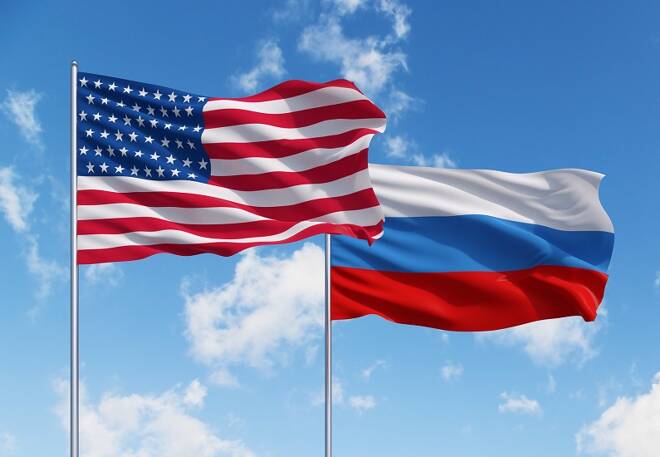Advertisement
Advertisement
Russia: Credit Risk Hinges on Design of Any Tougher Sanctions
By:
Russia’s credit outlook could be adversely affected by specific Western sanctions, in the event of a failure to defuse the crisis over Ukraine.
The cumulative impact of existing and potentially stronger future sanctions is a concern for the country’s credit outlook (rated BBB+/Stable Outlook by Scope Ratings).
A comprehensive package of sanctions has the potential to disrupt Russian exports, further discourage foreign and domestic investment, which the country needs for sustainable economic growth, and push up government borrowing costs – at least at the margin.
Agreement among Western allies to cut Russia off from the SWIFT international payments system would be potentially the most damaging action. Such a move would hold severe consequences for Russian investment and exports despite the economy’s increased resilience through reduced dependence on the dollar and foreign funding in recent years, as it has coped with existing sanctions.
Russia has reduced exposure to the dollar amid fresh sanction risks
Russia is heavily reliant on SWIFT, as most Russian oil is still traded in dollar. The share of Russian exports of goods and services sold in USD accounted for 54% of the total in Q3 of 2021 (see above chart), albeit down from nearly 70% during 2016-18. Russia currently conducts more trade with China in euros than in dollars, with EUR being the settlement currency for around half of Russian exports to China, compared with one-third for USD.
A measure under consideration is US sanctioning secondary trading of Russian sovereign bonds
Another measure under consideration is US sanctioning of secondary trading in Russian government bonds. This would have a more tangible impact on room for financial flexibility than April 2021 sanctions on primary market debt issuance of the state. Such an action would make it more difficult for state-owned Russian banks to substitute for lost US and non-US foreign demand on the primary market and sell Russian government bonds on to foreign banks on the secondary market. The share of non-resident holders in Russia’s treasury bond market is still sizeable, of around 19%, despite recent reduction.
Such a move would also further discourage foreign investment. Inbound foreign direct investment fell from an annual average of USD 55bn over 2010-13 to around USD 20bn over 2018-21.
One knock-on effect might then be an acceleration in local private capital outflows, which already rose to USD 72bn in 2021 in net terms, from USD 50bn in 2020, as well as further sale of Russian bonds by non-resident holders. High oil prices might not be able to fully offset such capital outflow, especially if foreign investors and Russian corporates start to factor in more adverse scenarios related to the conflict over Ukraine.
Higher energy prices are cushioning Russia from the crisis’ full economic impact
Higher energy prices are cushioning Russia from the full economic impact from the diplomatic crisis and any future sanction measures – at least in the short term, even without the Nord Stream 2 gas pipeline being in operation. The government has budgeted for an oil price of USD 62/barrel in 2022. The average price of Urals oil was around USD 86/barrel as of January.
But regardless of the design of any new sanctions, geopolitical tensions have helped push energy security further up the policy-making agenda in the EU, Russia’s biggest trading partner, whose imports of Russian oil and gas and related products are worth around EUR 90bn a year. We will likely see acceleration in EU efforts to diversify sources of oil and gas, which could reduce European demand for Russian energy exports longer term.
Plenty of uncertainty surrounding the application and design of future sanctions
To be sure, there is plenty of uncertainty surrounding the application and design of any future sanctions. A new status quo of heightened geopolitical tensions without further escalation, and thus no justification for additional sanctions, could also emerge. Even if the crisis worsens, it is not yet clear what mix of measures the US and EU might then impose.
Sanctions are also not cost free for the US and the EU. Exemptions to allow energy transactions with Russian banks, even under a scenario of sanctions involving SWIFT, could thus be a possibility. Similarly, sanctions could also accelerate Russian reliance on domestic financial markets in potential conjunction with partners such as China, thereby limiting longer-term financial damage.
Over the longer term, however, sanction risks significantly cloud an outlook for investment and growth of Russia. Even excluding the potential impact of additional sanctions, the economy’s moderate medium-run growth potential is estimated of around 1.5-2.0% a year, despite comparatively low per capita income and significant economic catch-up potential. This remains a key credit constraint.
For a look at all of today’s economic events, check out our economic calendar.
Levon Kameryan is Senior Analyst in Sovereign and Public Sector ratings at Scope Ratings GmbH. Matthew Curtin, Senior Editor at Scope Ratings, contributed to writing this commentary.
About the Author
Levon Kameryancontributor
Levon graduated with a M.Sc. in International Economics and Public Policy from the University of Mainz in 2016. Levon worked previously as an economist at the Central Bank of Armenia.
Advertisement
